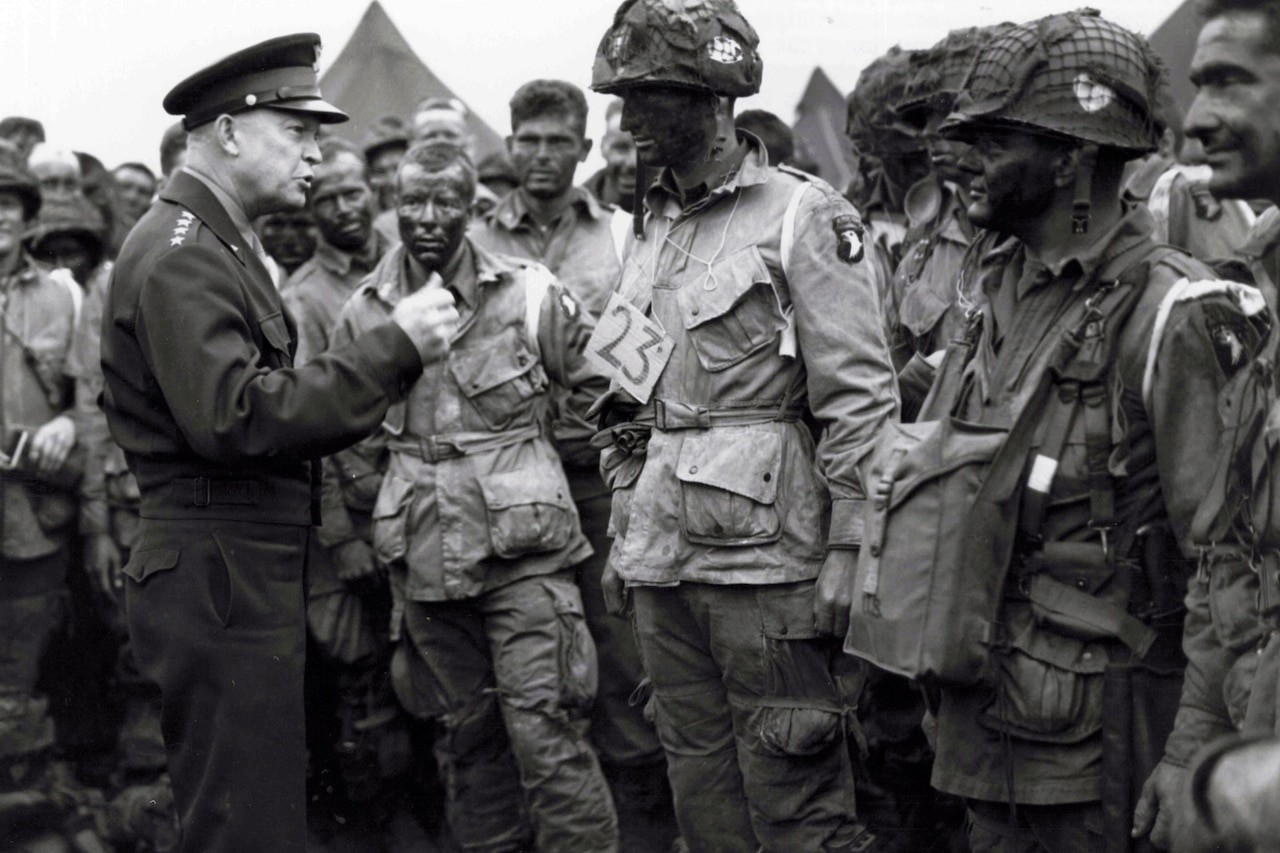D-Day. The very name conjures images of brave soldiers storming fortified beaches under a hail of gunfire, the air thick with the sounds of war. Immortalized in history books, movies, and personal accounts, June 6, 1944, marks a pivotal moment in World War II: the Normandy Invasion, also known as Operation Overlord. On this single day, over 160,000 Allied troops embarked on the largest amphibious assault in history, landing in Nazi-occupied France. The cost was immense, with over 9,000 Allied soldiers killed or wounded in the first 24 hours alone. Yet, D-Day is widely recognized as the crucial turning point, the beginning of the end for Adolf Hitler’s oppressive regime.
While the heroism displayed by the paratroopers and soldiers on that fateful day is legendary, many still wonder about the origins of its name. The question, “Why is it called D-Day?” is surprisingly common, and the answer is more nuanced than you might expect. Beyond the name, the story of D-Day is filled with fascinating details and near-misses that shaped the course of history. Let’s delve into some key aspects of this monumental event, starting with the mystery behind its name.
Decoding D-Day: What Does the ‘D’ Actually Stand For?
The most frequently asked question about D-Day, as noted by the National World War II Museum, is undoubtedly, “What does the ‘D’ in D-Day stand for?” Contrary to popular belief, the ‘D’ doesn’t stand for any specific word like “Deliverance,” “Decision,” or “Doom.” Instead, the explanation is rooted in military planning and terminology.
Many historians and military experts believe that “D-Day” is simply a generic military term. The “D” in D-Day merely stands for “Day.” This is a common practice in military operations where the specific date of an operation is often not finalized until close to execution. Using “D-Day” as a placeholder allowed military planners to discuss and coordinate operations without revealing the actual date prematurely. Similarly, “H-Hour” is used to denote the hour at which an operation commences.
General Dwight D. Eisenhower, the Supreme Allied Commander during World War II, offered a straightforward explanation through his executive assistant, Brigadier General Robert Schultz. According to Eisenhower, “any amphibious operation has a ‘departed date;’ therefore the shortened term ‘D-Day’ is used.” He further clarified that numerous “D-Days” occurred throughout the war, with the Normandy landing being the most significant and widely remembered. Therefore, D-Day, in its simplest sense, is a military designation for the commencement day of a significant operation, with the Normandy landing earning its place as the D-Day in historical consciousness.
Alt Text: General Dwight D. Eisenhower delivering his famous “Order of the Day” speech to American paratroopers in England on June 6, 1944, before they departed for the D-Day invasion of Normandy.
D-Day: Originally Planned for June 5th
The success of D-Day was not only dependent on meticulous planning and the bravery of the soldiers but also on a narrow window of favorable weather and tidal conditions. The Allied command meticulously analyzed various factors to pinpoint the ideal date for the invasion. These crucial requirements included:
- Long daylight hours: To maximize the effectiveness of Allied air power throughout the day.
- Near-full moon: Providing sufficient light to guide naval vessels and airborne troops during the night and early morning hours.
- Favorable tides: Strong tides were necessary to expose German beach obstacles at low tide, allowing demolition teams to clear them. Rising tides were then needed to float landing craft filled with troops and supplies further inland.
- H-Hour and Tidal Synchronization: The timing of the landings (H-Hour) was precisely calculated to coincide with rising tides.
- Daylight before H-Hour: An hour of daylight was required prior to the landings to ensure accurate naval bombardments of German defenses.
Considering these stringent conditions, only a handful of days in May and June 1944 met the criteria. Initially, military planners selected June 5th as D-Day. However, weather forecasts on June 4th indicated an approaching storm that would bring high winds and heavy seas, making a landing on June 5th incredibly risky, if not impossible.
In a tense and crucial meeting on the evening of June 4th, General Eisenhower, after consulting with his meteorologists, made the momentous decision to postpone D-Day by 24 hours. Forecasts indicated a brief window of improved weather on June 6th. This last-minute change of plans was a gamble, but ultimately, Eisenhower’s courageous decision to delay the invasion to June 6th proved vital to its success.
Alt Text: Wounded American soldiers from the 16th Infantry Regiment awaiting evacuation for medical treatment near the chalk cliffs of Omaha Beach on D-Day, Normandy, France.
Beyond Omaha and Utah: The Five Beaches of Normandy
When we think of D-Day, the names Omaha Beach and Utah Beach often dominate the narrative, largely due to the intense fighting and significant American casualties experienced on these sectors. However, the Normandy invasion was a multinational effort spanning a 50-mile stretch of coastline, encompassing five distinct landing beaches. It’s crucial to remember that the United States forces were responsible for only two of these beaches.
The five beaches, from west to east, were code-named:
- Utah Beach: Assigned to the U.S. 7th Corps.
- Omaha Beach: Assigned to the U.S. 5th Corps.
- Gold Beach: Assaulted by British forces.
- Juno Beach: Assaulted by Canadian forces.
- Sword Beach: Assaulted by British forces, with some French and Polish units.
While the American forces faced particularly brutal resistance at Omaha Beach, the British and Canadian forces also encountered fierce opposition on Gold, Juno, and Sword beaches. The combined effort of all Allied forces across these five landing zones was essential to the overall success of Operation Overlord. This international collaboration underscores the truly Allied nature of the D-Day invasion and the broader fight against Nazi Germany.
Alt Text: Aerial view of the Normandy coastline during D-Day, showing landing craft approaching the beach amidst barrage balloons and Allied troops.
A Close Call: D-Day’s Brush with Failure
Despite the eventual Allied victory, D-Day was fraught with peril and came perilously close to failure, particularly for the American forces in the initial waves of the invasion. Several critical factors contributed to the immense challenges faced on June 6th:
- Paratrooper Dispersal and Casualties: Thousands of U.S. paratroopers, tasked with securing inland areas behind Utah Beach, suffered heavy losses during their airborne drop. Many were shot down mid-air, while others drowned in flooded marshlands due to heavy equipment and disorientation. Furthermore, many paratroopers were scattered far from their designated landing zones, hindering their ability to quickly organize and achieve their objectives.
- Navigational Errors: Strong currents and poor visibility caused many landing craft, carrying both paratroopers and seaborne infantry, to miss their intended landing points. In some instances, troops landed miles away from their planned locations, disrupting unit cohesion and strategic timetables.
- Omaha Beach Bloodbath: Omaha Beach proved to be the deadliest sector of D-Day. Allied intelligence significantly underestimated the strength and preparedness of German defenses at Omaha. Rough seas further compounded the problems. Amphibious tanks, launched offshore to provide crucial early fire support, were largely ineffective; only a handful reached the beach. Infantrymen storming the beach faced withering machine-gun fire and artillery bombardment from entrenched German positions overlooking the beach. The carnage at Omaha was so severe that General Omar Bradley, commanding the U.S. forces there, briefly considered abandoning the operation.
Despite these setbacks and heavy casualties, the resilience and bravery of the Allied troops, coupled with crucial breakthroughs in the afternoon, prevented D-Day from turning into a catastrophic failure. Against all odds, both the Utah and Omaha sectors eventually secured their beachheads, paving the way for the continued advance into France.
Alt Text: Determined faces of American paratroopers inside a C-47 Skytrain aircraft, preparing to jump into Normandy on D-Day, June 6, 1944. One paratrooper holds General Eisenhower’s message to the troops.
The Secret Weapon: Enigma and Allied Codebreaking
One of the most significant, yet often understated, factors contributing to the Allied success on D-Day, and throughout World War II, was the breaking of the German Enigma code. The Enigma machine was a sophisticated encryption device used by the German military to encode their communications, believed to be virtually unbreakable.
Early in the war, a team of Polish and British codebreakers, including the brilliant Alan Turing, achieved a monumental breakthrough by cracking the Enigma code. This top-secret operation, known as Ultra, provided the Allies with invaluable intelligence throughout the war.
Leading up to D-Day, decoded Enigma messages gave Allied commanders precise information about German troop deployments and defensive positions in Normandy. This intelligence proved crucial in planning the invasion and anticipating German responses. On D-Day itself, Enigma intercepts allowed Allied commanders to monitor German communications in near real-time, providing faster updates on battlefield developments than their own communication channels could offer.
The ability to decipher German communications through Enigma provided a decisive advantage to the Allies. It is widely acknowledged that Enigma codebreaking significantly shortened the war and saved countless lives. The secrecy surrounding the Enigma project was maintained for decades after the war, highlighting its sensitivity and strategic importance. While the bravery and sacrifice of the soldiers on the beaches of Normandy are rightly celebrated, the intellectual triumph of breaking Enigma played an equally critical role in the Allied victory.
Alt Text: An Enigma “bombe” decryption machine, developed by the Allies to automate the process of breaking German Enigma codes during World War II.
Remembering D-Day: A Turning Point in History
D-Day was more than just a military operation; it was a turning point in the fight against tyranny and a testament to international cooperation and human courage. While the question “Why is it called D-Day?” might seem simple, the answer opens a door to understanding the complexities of military planning and the historical significance of this event.
Beyond the name, the story of D-Day is filled with remarkable stories of bravery, strategic brilliance, near disasters, and technological innovation. As we remember D-Day, it’s crucial to honor the sacrifices made by those who fought on the beaches of Normandy and to acknowledge the multifaceted factors that contributed to the Allied victory. Their efforts on that day paved the way for the liberation of Europe and a more peaceful world.

